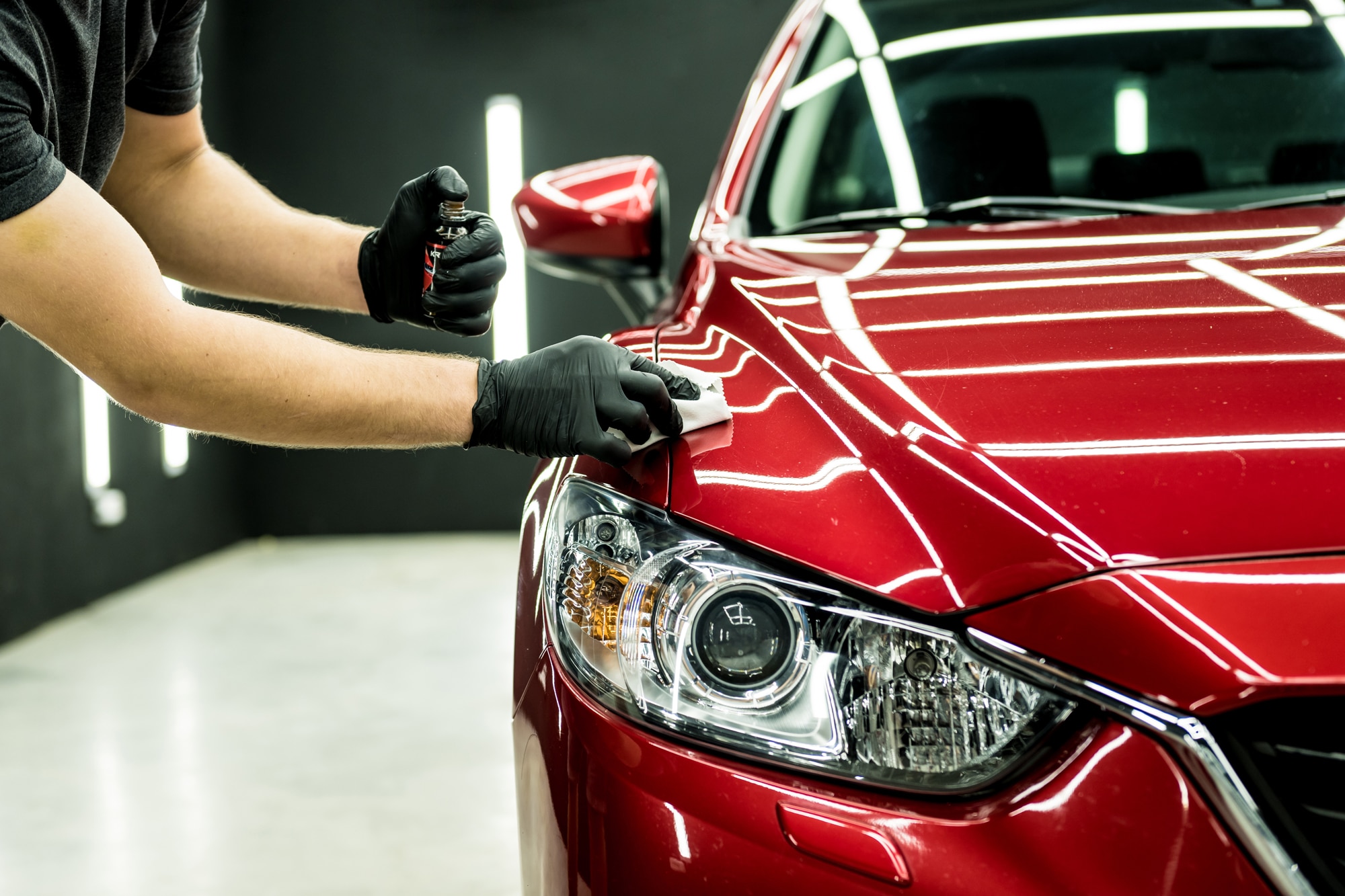What is Ceramic Coating?
This silica-based polymer can keep your car’s paint looking like new.
 Shutterstock
Shutterstock
Made of silicon dioxide, a ceramic coating is a type of clear semi-permanent auto body protection. It won’t guard against stone chips or scratches but it will protect your car’s exterior from things like tree sap, bird droppings, and bug guts. Unlike car wax, a ceramic coating creates a tough bond with the surface of the vehicle, so it doesn’t need to be applied as often. You can use it on top of paint-protection film or a vehicle wrap as well as on wheels, trim, and glass. In fact, it’s particularly useful on the windshield, as ceramic coating has hydrophobic qualities, causing water to form beads and slide off the surface. Cast your eye on any video demonstration wherein someone tosses a bucket of murky water against a ceramic-coated car and the results will leave you slack-jawed in amazement. Although no automotive-detailing expert worth his or her salt would suggest this treatment eliminates the need for car washes, it is effective at repelling dirt, mud, and grime.
How Much Does Ceramic Coating Cost?
There are two forms of ceramic coating: liquid and aerosol. Meant for the DIYer, a spray coating is easy to apply and can cost anywhere from $15 to $50 for a 12oz bottle. That should last you about a year, presuming you reapply the coating every few months. The liquid variety can run close to $100 for a 30mL bottle and requires a trained hand to use, as meticulously spreading a clear substance over every inch of the car’s exterior with a sponge takes a lot of time. A complete detailing job followed by a professionally applied ceramic coating may cost $2,500, but the protection should last for at least a few years.
Is Ceramic Coating Worth it?
For the person who buys or leases a new car every two or three years, ceramic coating likely isn’t worth the expense. But if you own a classic car or perhaps a future collectible, this is a smart way to keep your vehicle looking new and to protect your investment—particularly if you’ve paid to have the car painted.
Here’s the caveat: Your car’s paint needs to be in great shape before you make another move. Experts recommend a three-step process for restoring your car’s shine. First, seek professional detailing and/or paint correction to ensure perfection from the start. Second, apply either paint-protection film or a complete vehicle wrap to create a strong physical barrier between the car’s surface and the elements. Lastly, use a ceramic coating to keep the car shining like new.
What about Graphene Coatings?
If you're looking at ceramic coatings, chances are you've come across graphene treatments as well. Gaining ground in the last few years, a graphene coating is similar in concept to a ceramic one, in that it provides semi-permanent protection, but it’s based on carbon rather than silica. There’s a range of graphene solutions on the market, from relatively low-cost sprays for the DIYer to high-concentrate liquid formulas used by professionals.
The main advantage of graphene over ceramic is, reportedly, that you’ll see fewer residual water spots on your car after washes. It may still need development, though: Some users living in areas with harsh winters and heavily salted roads have found that graphene coatings are not as durable as ceramic ones.
Written by humans.
Edited by humans.
 Mark Hacking
Mark HackingMark Hacking is an award-winning writer with more than 20 years experience covering the automotive scene for some of the world's most popular publications. Mark holds an FIA International Race license and has his sights set on competing in the Rolex 24 at Daytona in the future. He was the first automotive journalist to race in the Ferrari Challenge series (in 2013) and the Jaguar I-PACE eTrophy series (in 2019).
Related articles
View more related articles